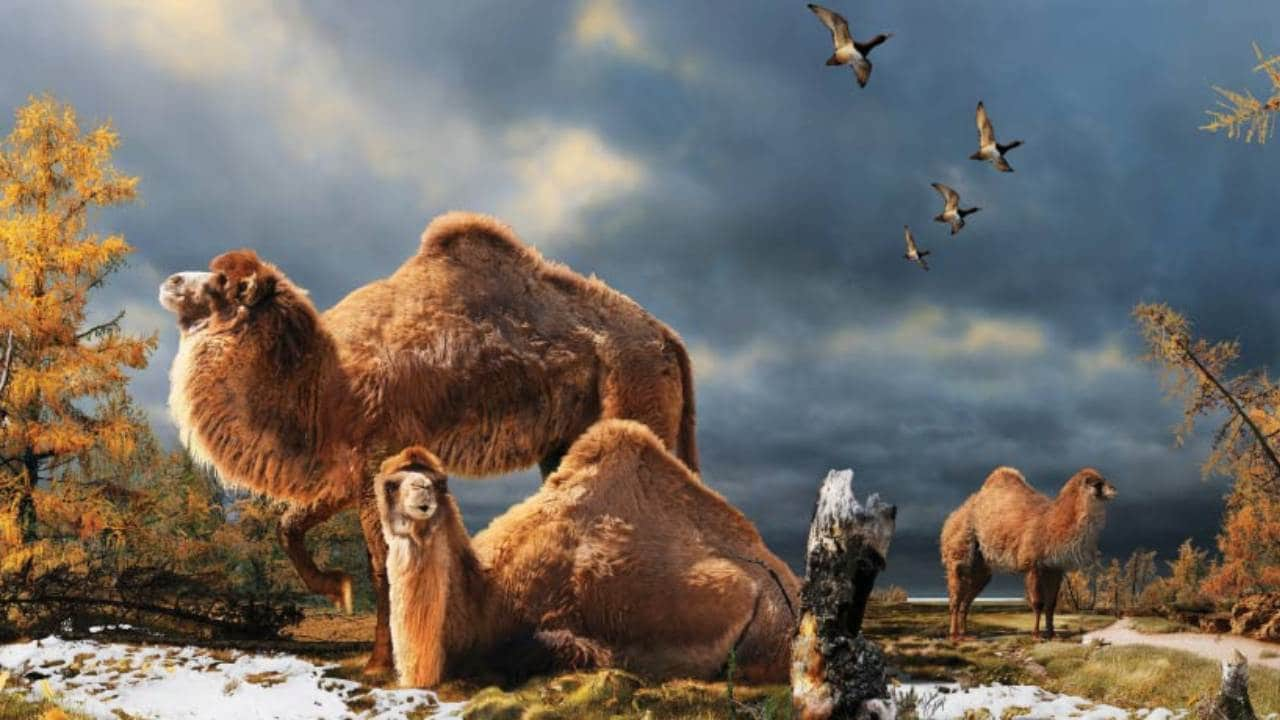Since the 1800s, we humans have reversed a natural, long-term cooling trend that goes back at least 50 million years. And all it took us, according to the study, was two centuries. The Earth’s climate by 2030 will resemble Earth’s mid-Pliocene period, which took place nearly 3 million years ago in geologic time. If our emissions continue unchecked, our climate by 2150 would compare to the warm and nearly ice-free Eocene period 50 million years ago. “If we think about the future in terms of the past, where we are going is uncharted territory for human society,” Kevin Burke, the study’s lead author and a paleoecologist researcher at the University of Wisconsin–Madison, told university press . “We are moving toward very dramatic changes over an extremely rapid time frame, reversing a planetary cooling trend in a matter of centuries.”
All species roaming the Earth and swimming its oceans had an ancestor that survived both the Eocene and Pliocene eras. Whether humans and the flora and fauna of today and the near future can adapt to these relatively rapid changes is not a certainty. The accelerated rate of change seems to be faster than anything experienced by life on the planet before. “We can use the past as a yardstick to understand the future, which is so different from anything we have experienced in our lifetimes,” paleoecologist John “Jack” Williams, professor of geography at the University of Wisconsin–Madison,
told
the press. “People have a hard time projecting what the world will be like five or 10 years from now. This is a tool for predicting that — how we head down those paths and using deep geologic analogues from Earth’s history to think about changes in time.” Deep-geology studies examine radioactive components of ancient Earth that have accumulated over a sample patch of land to date the formation and conditions of that geological time period. It is believed that soil and organic matter from the Pliocene would differ from those in the Eocene era in its deep-geologic makeup. [caption id=“attachment_5715431” align=“alignnone” width=“1280”] Life in the Pliocene. Image: Julius Csotonyi/SN[/caption] The models made in the study show that these climates first emerged first in the centre of continents and then spread outwards toward oceans. Temperature rise, increase in precipitation, melting ice caps and temperate climates near the Earth’s poles are changes that are common to the Pliocene and present day. The study’s findings have more implications for geologists, climate change scientists and Earth historians, but the researchers strike the right balance between alarm and optimism. On the one hand, Earth is headed into unknown territory over the lifetimes of the two or three generations to come. On the other, life has long proven to be resilient. “We’ve seen big things happen in Earth’s history — new species evolved, life persists and species survive. But many species will be lost, and we live on this planet,” Williams
told
the press. “These are things to be concerned about, so this work points us to how we can use our history and Earth’s history to understand changes today and how we can best adapt.”
Life in the Pliocene. Image: Julius Csotonyi/SN[/caption] The models made in the study show that these climates first emerged first in the centre of continents and then spread outwards toward oceans. Temperature rise, increase in precipitation, melting ice caps and temperate climates near the Earth’s poles are changes that are common to the Pliocene and present day. The study’s findings have more implications for geologists, climate change scientists and Earth historians, but the researchers strike the right balance between alarm and optimism. On the one hand, Earth is headed into unknown territory over the lifetimes of the two or three generations to come. On the other, life has long proven to be resilient. “We’ve seen big things happen in Earth’s history — new species evolved, life persists and species survive. But many species will be lost, and we live on this planet,” Williams
told
the press. “These are things to be concerned about, so this work points us to how we can use our history and Earth’s history to understand changes today and how we can best adapt.”
)